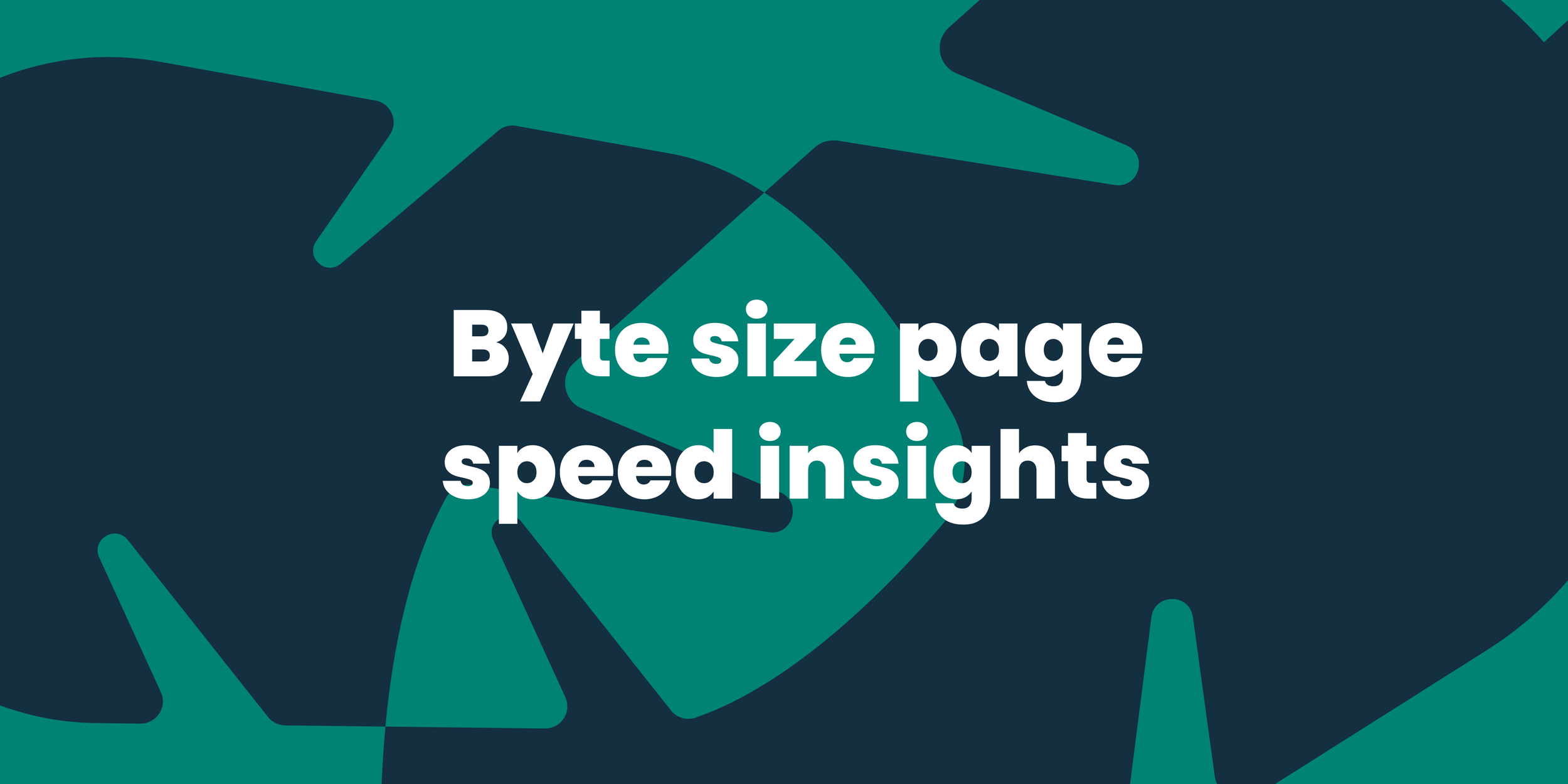How to evaluate and improve page speed
What is page speed?
Page speed is a measurement of how fast the content on your page loads.
Page speed is often confused with "site speed," which is actually the page speed for a sample of page views on a site. Page speed can be described in either "page load time" (the time it takes to fully display the content on a specific page) or "time to first byte" (how long it takes for your browser to receive the first byte of information from the webserver).
You can evaluate your page speed with Google's PageSpeed Insights. PageSpeed Insights Speed Score incorporates data from CrUX (Chrome User Experience Report) and reports on two important speed metrics: First Contentful Paint (FCP) and DOMContentLoaded (DCL).
What is First Contentful Paint?
First Contentful Paint (FCP) is a metric used in web performance analysis to measures the time from when a user navigates to a webpage to when the browser renders the first visible element, which could be text, an image, or any other type of content. It provides insights into how quickly a web page loads and becomes visually usable for the user.
From an SEO perspective, FCP is crucial because search engines, such as Google, consider page speed and user experience as ranking factors. Websites that load faster and provide a better user experience are more likely to rank higher in search engine results pages (SERPs).
Top tips for improving your FCP
When optimising for FCP, web developers and SEO professionals focus on various factors that can influence page load speed, such as:
Minimising server response time
Optimising images and other assets
Leveraging browser caching
Reducing unnecessary JavaScript and CSS code.
By improving FCP, website owners can enhance user satisfaction, reduce bounce rates (when users leave the site quickly), and potentially improve search engine rankings, leading to increased organic traffic and better visibility in search results.
What is DOMContentLoaded (DCL)?
DOMContentLoaded (DCL) is an event that occurs when the initial HTML document has been completely loaded and parsed by the browser, and the Document Object Model (DOM) is ready for manipulation, which then means a user is able to see the full content as intended.
From an SEO perspective, DCL is important because it contributes to the overall page loading speed and user experience, which are key factors in search engine rankings. Search engines, like Google, consider page speed and user engagement metrics when determining the relevance and quality of a website.
Top tips for optimsing for DCL
To optimise for DOMContentLoaded (DCL) and improve page loading speed, web developers and SEO professionals often employ various techniques, including:
Minimising the use of render-blocking resources
By optimising the order in which CSS and JavaScript files are loaded, developers can prevent them from blocking the rendering of content on the page.
Compressing and minifying resources
Reducing the size of CSS, JavaScript, and HTML files by removing unnecessary characters and spaces helps to speed up parsing and rendering.
Leveraging browser caching
Caching static resources enables browsers to store and reuse them, reducing the need for repeated downloads when users revisit the website.
Asynchronous loading of scripts
By utilising the async or defer attributes when including JavaScript files, developers can ensure that they do not block the rendering of the page and allow it to load in parallel.
We’re not going to pretend like we didn’t use a lot of long and complicated language to try to break down all-things-page-speed. So if you’re looking for more help or an expert to help implement some of these actions we’ve talked about here, well then we know a guy…

